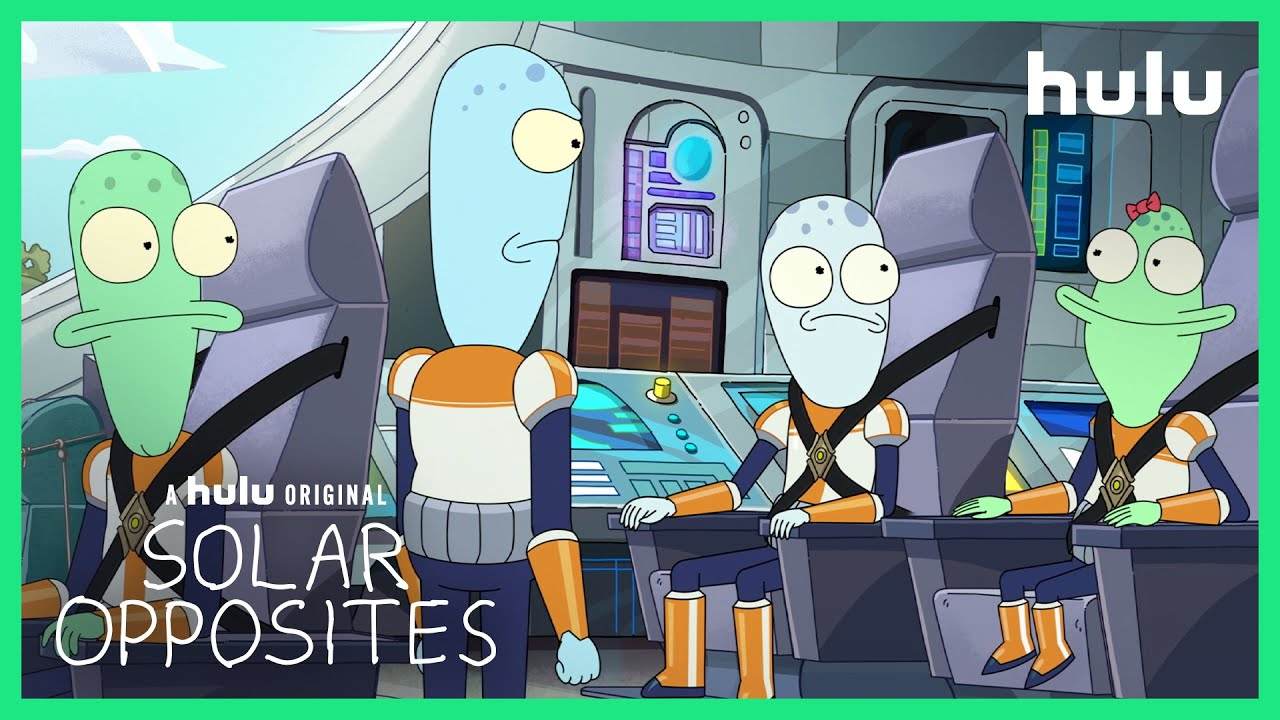“Planet Shlorp was a perfect utopia … until the asteroid hit. One hundred adults and their replicants were issued a Pupa and escaped into, uh, the space, searching for new homes on uninhabited worlds.”
So begins the title sequence of “Solar Opposites,” a Hulu original whose sophomore season was released on March 26. The show was created by “Rick and Morty” co-creator Justin Roiland and producer Mike McMahan, who bring all of the sci-fi from the hit Adult Swim show and add a plethora of references to popular culture.
Roiland voices the star of the show, Korvo, who is one of the 100 alien adults to escape Planet Shlorp. Krovo’s partner is Terry, and together with their replicants — alien children that were assigned to Korvo and Terry before the asteroid hit Shlorp — Yumyulack and Jesse, the four crash-land their spaceship on Earth with a Pupa onboard. At the start of the second season, the four characters refer to themselves as the solar opposites, from which the show gets its name.
Since Earth is obviously not the uninhabited planet the crew was searching for, the show centers around the crew as it tries to repair the ship after it crashes — or more accurately, as Korvo tries to repair the ship. The other three aliens become obsessed with life in their Anytown, U.S.A.; Jesse is obsessed with having the stereotypical American high school experience, while Yumyulack tries his best to fit in with the popular boys. Meanwhile, Terry becomes obsessed with movies and television as Korvo constantly reminds them that the crew needs to repair its ship.
What makes the show great aren’t the moments when the characters use sci-fi inventions to get ahead (for example, Jesse and Yumyulack use a time machine to get out of running the mile at school). That aspect of the show is actually quite predictable. What I enjoy the most are the quick references to aspects of American culture. When Korvo gets jealous about not fitting in at dinner parties, the episode’s quips focus around wine from Brooklyn, NPR and Whole Foods.
The dinner party episode also features half-alien, half-robot dogs that eat people alive and poop out wine bottles adorned with the consumed person’s face. I bring this up not because I found that bit funny but to warn people who might not appreciate seeing cartoon blood and guts every episode. It doesn’t really bother me, but if you’re not a fan of gore, then do not watch this show.
For fans of the more dramatic, “Solar Opposites” does have the subplot for you. One of the ways Yumyulack uses technology to make his life more convenient is to take anyone he encounters in everyday life who bothers him and shrink them to the size of a bottle cap before throwing them in a giant terrarium installed into his bedroom wall.
The civilization of people shrunken by Yumyulack, referred to as “the Wall” by its inhabitants, is totally removed from the antics of the solar opposites and offers a dramatic take on an isolated society, where people have no chance of returning to the life they knew before. “The Wall” is almost like if adults ended up on the deserted island in “Lord of the Flies.”
The show reveals that the Pupa, which the crew is tasked with taking care of, will one day terraform the world it’s on to create a new homeworld for the aliens in exile. Until that happens, I’ll be watching the solar opposites make fun of school, celebrities and homeowners associations.
